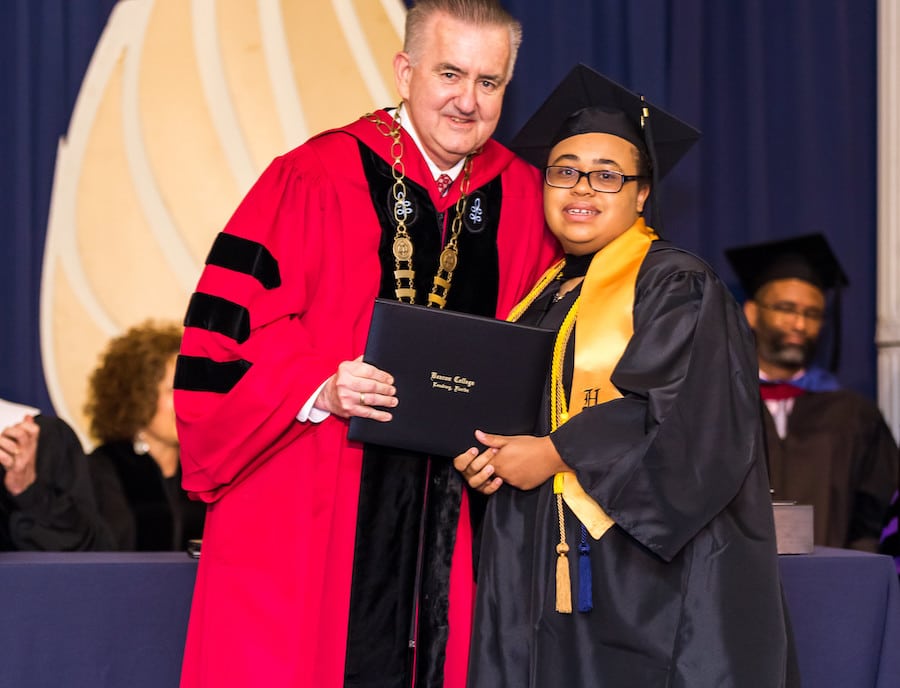
By Dan Wine
Some research suggests that a person who has a four-year college degree might earn roughly $1 million more than someone with just a high school diploma during their lifetime.
That’s a pretty staggering number, and for students with learning disabilities a college degree could be even more critical.
Esteban Lopez, director of corporate and academic outreach at Beacon College, said the challenge is to provide those students who are graduating college access to the workplace.
“Some companies are doing work in this area. Some colleges are working in this area,” Lopez said. “But it’s almost like the new frontier.”
According to the Kessler Foundation, which works on behalf of people with disabilities, the employment rate rises from 20 percent for those who have not completed high school, to 33 percent for those whose education ended with high school graduation, to 53 percent for those with bachelor’s degrees.
Earnings also rise sharply with education: People with disabilities who have a high school education earn an average of $22,966 a year, whereas those with graduate degrees earn an average of $66,899, the foundation reported.
Lopez recounted a story about a Beacon student who shared the following: “When I was 5 years old, my parents were told that I was never going to be able to talk. When I was in middle school, my parents were told that I was never going to be able to graduate from high school. When I was in high school, my parents were told that I was never going to be able to go to college.”
That student completed an internship with Dell Technologies, graduated with a business degree from Beacon in four years and recently landed a job paying him $62,000 a year.
“A college education makes you very employable,” Lopez said. “You might be able to move from blue collar to white collar, from an hourly rate to a salary with benefits.”
One year after graduation, 85 percent of Beacon graduates were employed or pursuing continuing and graduate study, the 2017 numbers show.
Bill Hertan, a diversity consultant and managing director of TRI Partners Inc., helps companies build inclusion into their workforce. He has worked for large companies such as Starbucks, American Express, ABC and Disney.
Hertan has firsthand experience: His oldest son, now 28, was diagnosed with visual and auditory learning disabilities as a young child. They tried private and alternative schools, but he continued to fall behind.
“By the time he got to high school, he was just a lost soul, and he ended up dropping out of school,” Hertan said. “We ended up getting him into Job Corps because they train people for the trades, and he was very close to getting a certificate in welding but then dropped out of that as well. So it’s been a rocky road for him.”
For students with disabilities, the Florida public high school four-year graduation rate for 2016-17 was 66 percent, according to the National Center for Education Statistics. That compared with 82.3 percent overall. National numbers reflected a similar disparity.
Hertan said teachers, especially in public schools, often are not equipped to manage students with learning disabilities. And there aren’t enough special-education experts to handle the demand for guidance and support.
Still, he said, students who learn differently often manage to make it through high school. But then there aren’t many options — perhaps a two-year college or trade school — that will lead them into a successful career.
He called the handful of schools like Beacon College “an oasis” for these students because they receive the guidance and support that are so critical.
When it comes to entering the workforce, though, companies still have a lot of work to do in addressing the needs of employees, Hertan said.
“There’s still a lot of stigma around disability, and particularly around cognitive disability,” he said. “So most organizations are really not addressing that, and that’s where I see the partnership between Beacon and our community organizations and institutions can be really, really valuable.”
For companies, Lopez said, it’s about changing their corporate culture and understanding that a person with ADHD has different needs from someone with a processing disorder versus a worker on the autism spectrum.
A number of large companies participate in the Autism at Work program to provide more opportunities to people on the spectrum.
“But there are thousands of companies throughout the U.S., so having 30 to 40 companies means there is still a long way to go,” Lopez said. “You need to open the doors, the economic opportunity for individuals with learning disabilities throughout small, medium and large companies — not only the big ones.”